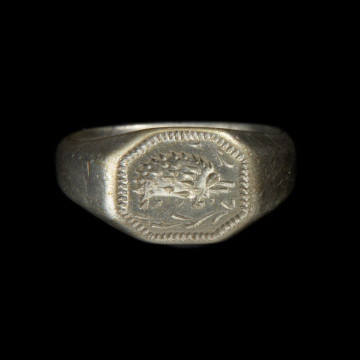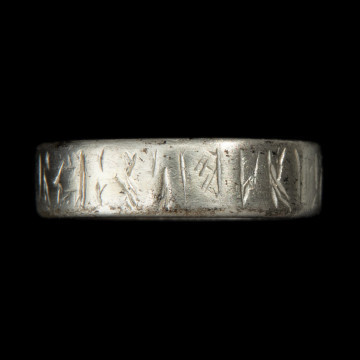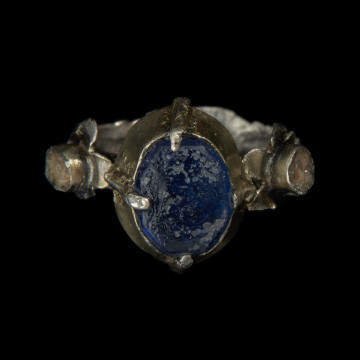
Signet ring with hedgehog
przełom XIV i XV wieku
National Museum in Szczecin
Part of the collection: Set of archaeological relics found in the Lublin Region
A bronze fibula (buckle) from Masowo, the Rycki poviat, the Lublin Voivodeship, is an ornament used to fasten clothes.
The site in Masowo was discovered in 1953 and investigated by Jan Gurba from the Maria Curie-Skłodowska University in Lublin. More than a hundred graves belonging to the people of the Przeworsk culture, who inhabited the Lublin region from the 2nd century BC to the 4th century AD, were recorded there. The area of the Przeworsk culture is attributed to the Lugian and Germanic Vandal tribes mentioned by ancient authors. The fibula was probably an equipment of a mortuary tomb of a warrior of one of those tribes.
The buckle is of one-piece construction; it was made of one piece of brown wire. It consists of a head of an upper string, which expands towards an eight-coil spring, a bow with two combs and a leg ending in a third comb.
This type of costume decoration dates to the 1st century AD and indicates an influx of antiquities from the Roman provinces. The appearance of Noricum and Pannonia clasps in the areas of Central European Barbaricum is connected to a wave of imports from the area of present-day Bohemia, which spread north from the Danube (from the provinces of Noricum and Pannonia) via the Markoman tribe.
Author / creator
Dimensions
cały obiekt: height: 0,58 cm
Object type
jewelry
Technique
cast
Material
bronze
Creation / finding place
Owner
The National Museum in Lublin
Identification number
Location / status

przełom XIV i XV wieku
National Museum in Szczecin

przełom XIV i XV wieku
National Museum in Szczecin

National Museum in Szczecin
DISCOVER this TOPIC
National Museum in Szczecin
DISCOVER this PATH
Educational path